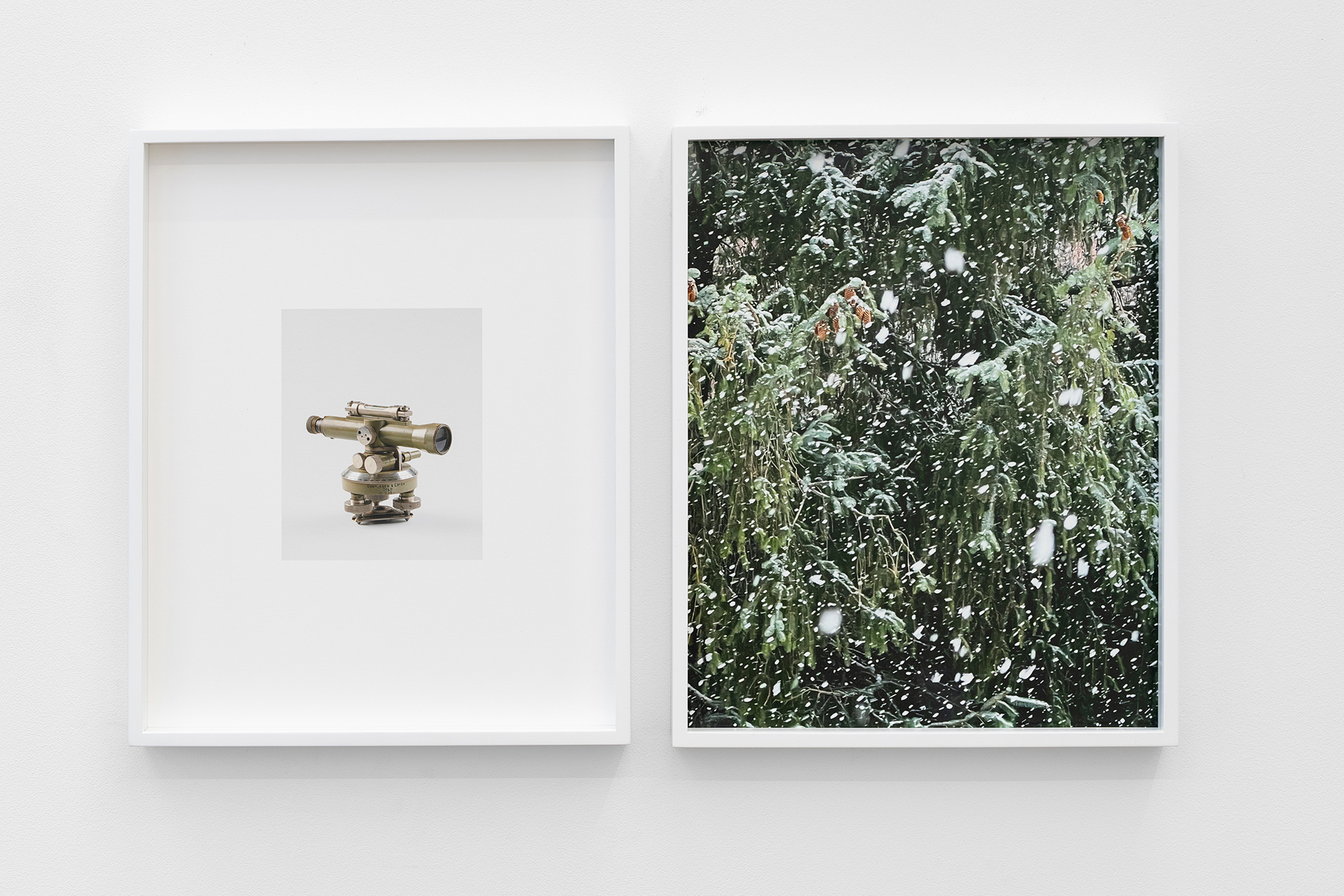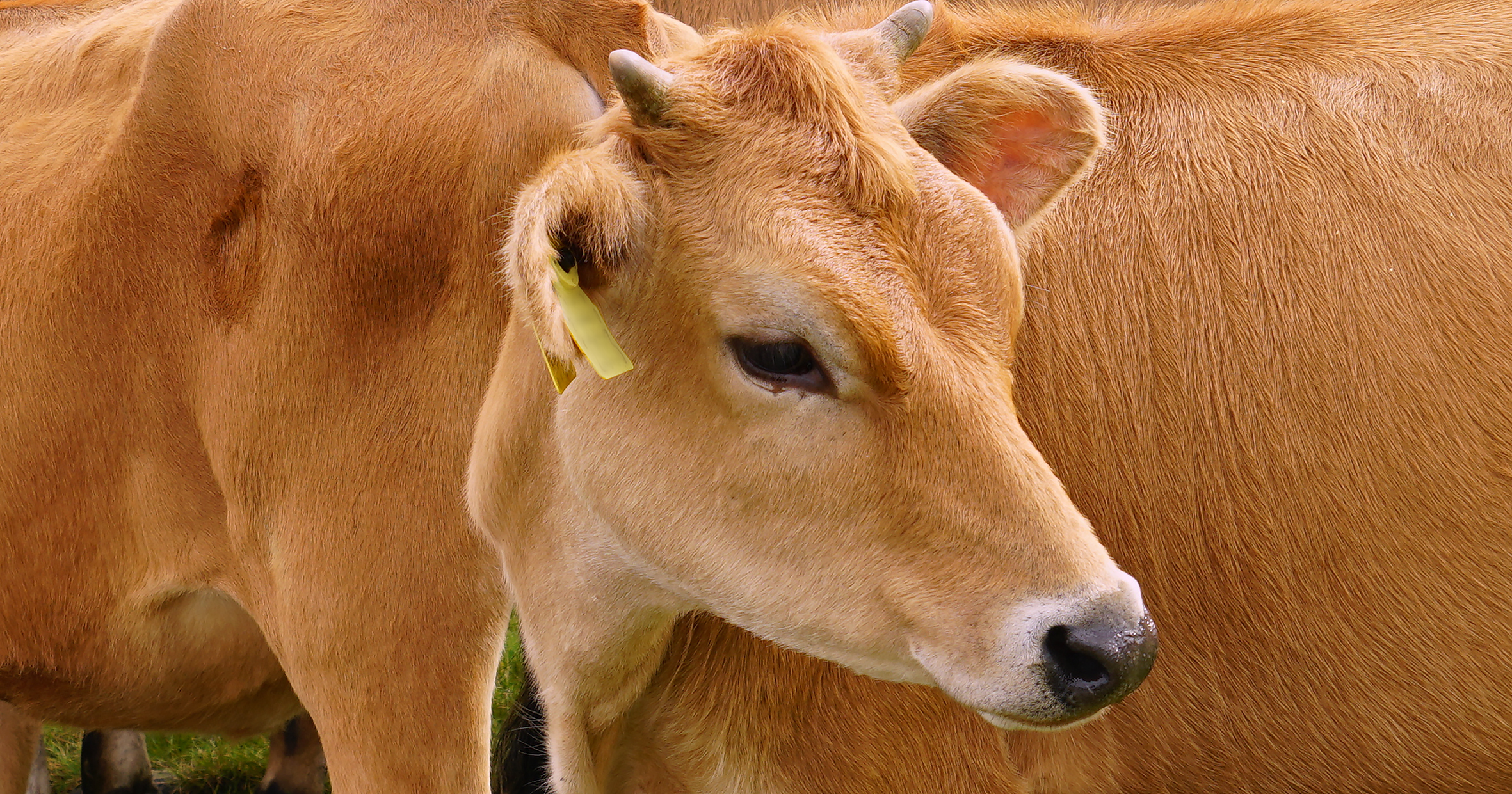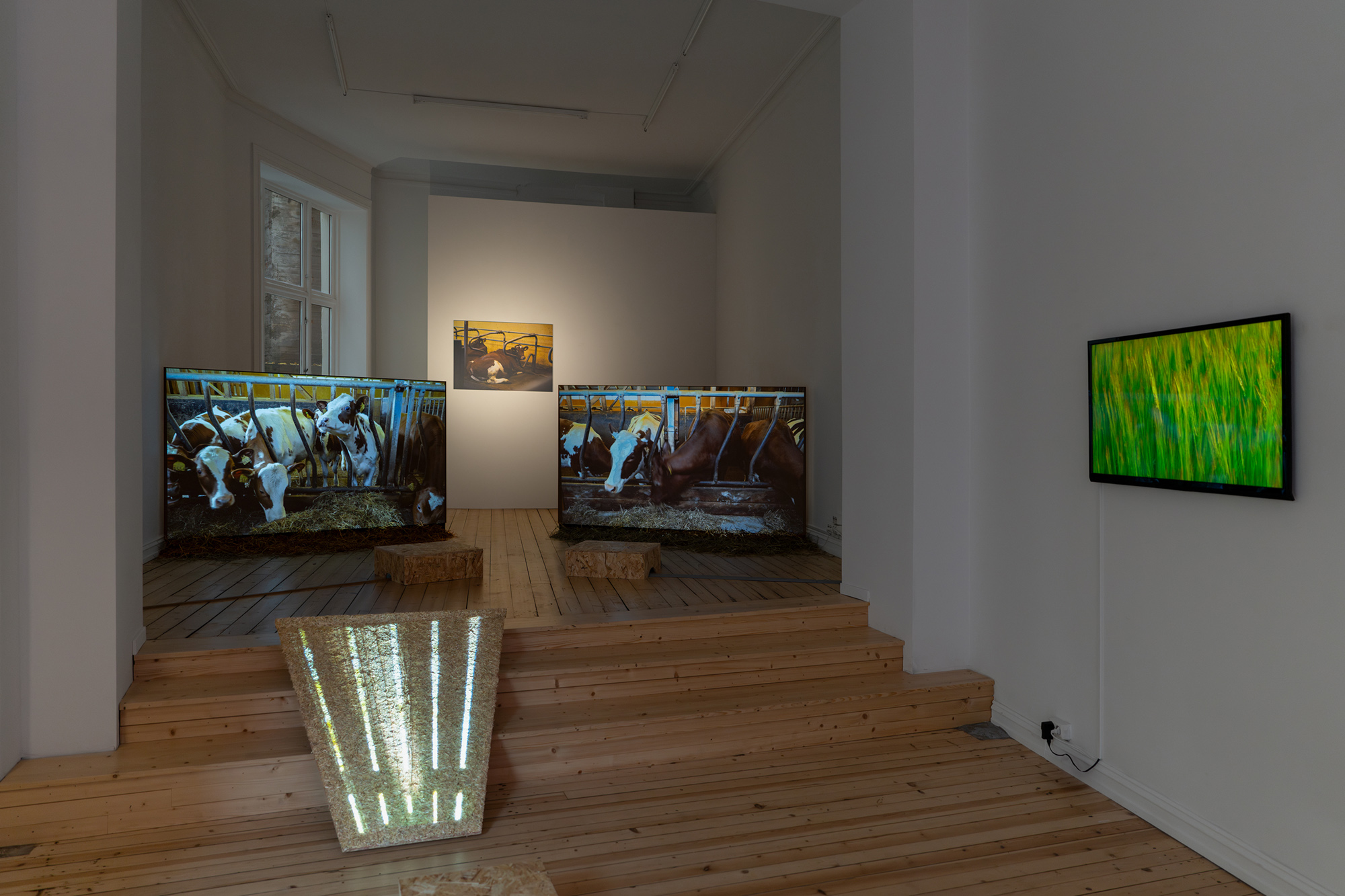Utstilling
Tidsånd møter husdyr på MELK
10/22/2025
Stikkord:

Du viser utstillingen Foreign Landscapes på MELK. Hva får publikum se i utstillingen?
Ulla Schildt: I utstillingen på MELK viser jeg en rekke fotografier tatt med analog film, digitalt kamera og et engangskamera, samt ett motiv hentet fra internett. Arbeidene varierer i størrelse: fra de største som måler 108 x 129 cm til de minste på 13,8 x 11,5 cm.
Fotografiene er installert med mye luft rundt seg. Tanken er at de store, mørke fotografiene leder blikket videre til de små, lysere arbeidene, som har et helt annet og mer abstrakt innhold.

Motivene i utstillingen din spenner bredt fra landskap, til objekter og interiørbilder. Kan du si noe om den mangfoldige motivkretsen og hva som binder motivene sammen?
Ulla Schildt: Alle verkene reflekterer det som best beskrives som en tidsånd: hvordan ideologier og tankemønstre oppstår parallelt på mange steder, og hvordan våre tanker kan virke som deler av et kollektiv maskineri. Samtidig berører de ulike motivene spenningen mellom det vi kan vite – altså vitenskapen – og det som ligger utenfor vår kontroll: tilfeldigheter og sammenhenger vi ikke kan se, forstå eller forutsi.
Hvert bilde kan stå alene, men de knyttes også sammen gjennom titlene som peker mot noe mer enn det umiddelbare, konkrete motivet. For eksempel kan Solid Structures – som avbilder stoler stablet i en formasjon i det som ligner et lagerrom – forstås både som det vi faktisk ser på bildet, og som et spørsmål om vår tid: Hva er solid når alt synes å være i endring?
Verkstitlene spiller en viktig rolle isolert sett, men også i kombinasjon med essayet Foreign Landscapes, som er skrevet av Monica Holmen til utstillingen, og som avsluttes med utsagnet «Close one eye and see half. Close both and see everything» (hentet fra Ohm av Seigmen, skrevet av Kim Ljung og utgitt på albumet Total, 1994) – som kanskje sier noe om hva som kan oppstå i mellomrommene?

Du er aktuell med utstillingen Cows Are Better på MELK. Hva får publikum se i utstillingen?
Farhad Kalantary: Upon arrival you’d see from outside a large photograph covering a window of the gallery. It shows the outer wall and a window of a typical Norwegian barn. (Outside, 2025, Photo printed on fabric, 3 x 3m).
Enter the galley and cross the first room, you will see a doorway, where I have placed a wooden structure around the lower part of it ( Lavere terskel, 2025).
Right in front of you is a large photograph of an old door in a barn. A video projector is shining on it and gradually changing its colors. (Resuscitating The Exit, 2025)
To your right you will see an image of a window floating in the air against the window of the gallery. It shows the image of a window from inside the barn. We see white light coming from that window. (Horizon, 2025)
To the left we see the image of an orange calf. (Youth, 2024)
Next to it on the floor lying on the three stairs of the gallery, we see a panel with trapezoidal shape covered with dried hay. A video is projected on it (Hay Light, 2025).
In front we see two video screens with projections of younger cows in a barn and we hear their sound (Kyr i fjøset, 2025).
Behind them we see the picture of a cow lying on the floor of the barn (Mother, 2025).
As we turn to the right we see a TV screen with images of an oat field moving slowly in the wind (Oath, 2025).

Kyr, fjøs og bondegårdens låve står sentralt i prosjektet ditt. Hva var det som gjorde at du ville lage et multimedialt kunstprosjekt om nettopp kua og dens habitat?
Farhad Kalantary: This project began as a journey back to my own childhood and memories of being at my grandparents’ village, where I’d spend time with cattle, running in and out of the barn, observing the behaviour of cows and people around them. In addition it was the idea that my children, growing up in a spotless city, have never entered a cowshed and have no experience of being around such enormous and mysterious animals. All they see of the cows are packages of meat or boxes of milk in the shops.
But then the idea of the project started growing, developing and making new branches. I started wondering if I can find ways to portrait the life of cows and their emotional conditions.
My intention was to convert an urban gallery space into a cowshed albeit in a symbolic way. In doing so the works in the exhibition would bring the air of a rural location into an urban space. A cowshed is a distinct location excluded from the urban space. I think it is a place that unites the entire humanity against nature. Farming animals is a universal practice dating back to thousands of years ago. Entering a cowshed is like arriving at past times for any urban person. As we come into a barn we step into the fragrant space of our ancestors.
On a thematic level this exhibition wishes to explore the visions and divisions of two alternative life styles: the urban vs. the rural.
As an urban man everything that I considered intriguing and beautiful belongs to the rural space: the landscape and the touch of land, sincerity, limited grid, open air, utopia, and above all the sense of freedom. On the contrary the urban life negates the classic notions of freedom and it ignites the senses of dystopia. Imagine that millions of people are crammed into a tiny space, willingly, and they are all asking for freedom! How could such conditions even afford freedom?
The urban conditions transcribe freedom in terms of law, order and individual’s rights, and it does not tolerate the idea that the emancipation of humanity is bound to the emancipation of nature. Working on this project has helped me with better understanding of the idea that deep down humanity mourns and yearns for its lost animality.
On the other hand, the thematic of the exhibition acts as a pretext to experiment with the relationship of moving image and photography, which are both in a state of crisis today. As artistic media they both rely heavily on the new technologies of image production, and at this age of mobile phones, social media and AI they face an uncertain future.
More than a hundred years ago, the invention of photography shook the foundations of realistic painting and forced it towards abstraction. When billions of amazing images are circulating the Internet and passing through our screens how can the “image” preserve its integrity as an art form?
Enduring the current conditions, photography and video art must look for new modes of survival and perhaps join their forces in exploring new and neglected areas of the visual experience. Cows Are Better takes on such challenges and it presents a number of experiments with photography and video and their interdependency.
UTSTILLINGENE COWS ARE BETTER AV FARHAD KALANTARY OG FOREIGN LANDSCAPES AV ULLA SCHILDT VISES PÅ MELK TIL OG MED SØNDAG 02. NOVEMBER.
Ønsker du å studere fotografi eller vil du studere videokunst og film? Les mer om Oslo Fotokunstskole og søk skoleplass for heltids- og deltidsstudium (kveld). Skolen tilbyr undervisning i de to linjene «fotografi» og «film- og videokunst». Skolen tilbyr også fotokurs. Oslo Fotokunstskole er en fotoskole i Oslo for deg som ønsker å utforske dine kreative evner i et engasjerende og dynamisk miljø. Skolen ble etablert i 1989 og holder til i velutstyrte lokaler ved Alexander Kiellands Plass. Les mer om hvordan du kan starte din fotoutdanningeller filmutdanning på oslofotokunstskole.no.

